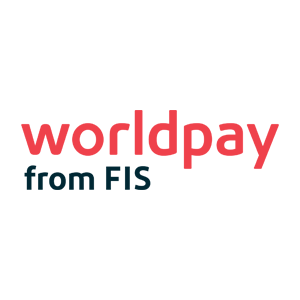It’s been called the year of the retail trading by Deloitte. But we may look back at 2020 as the beginning of a significant period for brokers, too.
Over 10 million Americans opened new accounts with brokers in 2020 [Ibid] – perhaps driven by more time on their hands and less money in their savings accounts. In any case, this surge in sign-ups has been good news for brokers. Last year, investment platforms placed targeting new client segments among their top five growth strategies. With millions of new investors in the market, it seems the target is in sight.
But these aren’t your pre-pandemic retail investors. And therein lies the challenge.
It seems like a new wave of retail investors has arrived, with 6 million Americans downloading trading apps in January 2021 alone. And while this new cohort may be tech-savvy, they may not necessarily be investment-wise.
The increase in new trading accounts means regulators are watching closely. In fact, at the end of 2020, global financial institution fines and penalties totalled $5.6 billion for Anti Money Laundering (AML) and Know Your Customer (KYC) non-compliance.
This all points to the year of retail trading having lasting effects on the way you continue to do business. Among the usual growth strategies like onboarding new clients and increasing revenue, you may also need to follow regulations closely and take measures to prevent fraud in all channels.
Fortunately, we are here to help. Let’s take a look at four trends you may face in 2022 and beyond – equal parts opportunity and challenge – and how Worldpay from FIS can help you prepare for them.
Multi-asset trading is growing in popularity
Geopolitical and economic uncertainty has driven traders to multi-asset trading – combining different types of assets like stocks, bonds real estate and more, in a single portfolio. In a way, it’s a form of risk management- if one market is trading flat, traders may find opportunities in an alternative market. It also allows for Tactical Asset Allocation, which accounts for different kinds of asset performing better at different stages of a business cycle.
The rise of social trading – where investors are influenced by social media and prefer to learn by copying – has also helped to remove the barriers between markets. And of course, retail investors are drawn to opportunities wherever they are, be they stocks, bonds, ETFs, real estate, or alternatives.
In fact, the total value of alternative assets under management is expected to reach $21.1 trillion by 2025. So, how can you stay prepared for the growth of multi-asset trading?
Worldpay’s global expertise in CFD and FX trading – as well as stock brokerages – can help you expand confidently and securely into new markets. Our leading acquiring services include local processing and analytics, plus a wide range of local payment methods, that can help with optimizing acceptance rates.
Cryptocurrency goes from alternative to mainstream
If you’re preparing for the growth of multi-asset trading, you probably won’t have missed one of the most popular alternative assets - cryptocurrency. Almost half of millennials and a third of all Americans own some kind of cryptocurrency. In fact, the global market value of all cryptocurrencies now exceeds $2 trillion.
Exchanges have made it attractively simple for new retail investors to get involved. But with 46% of Americans saying they planned to buy cryptocurrency in the next 12 months, this is definitely more than a fad. Indeed, industry experts suggest it’s the right time to think seriously about making cryptocurrency part of your multi-asset portfolio.
Open banking broadens the broker-trader relationship
As we’ve seen, retail investors are no longer bound to brokers’ offices – in the last year alone, electronic trading volumes increased by 30%. One of the reasons this has been possible is the rise of open banking.
Open Banking allows clients to transfer funds securely to brokers directly from their bank account via a third party authorized company. This helps with seamless checkout experiences through quick and safe payments using traders’ existing bank accounts.
Open Banking Hub by Worldpay from FIS helps brokers to accept payments from retail investors in real-time through direct bank transfers. These transactions boast lower flat fees for high average transaction values (ATVs) and offer a much simpler and more consistent customer journey as traders can access funds on the go from their mobiles. Equally important, Open Banking Hub can assist with keeping you compliant by reducing the risk of fraud through accelerated KYC checks through account and identity verification, in turn reducing the number of chargebacks.
Strong Customer Authentication raises the bar
PSD2 and its Access to Account (XS2A) mandate are part of what’s made Open Banking possible. But there’s a lot more to it than that, especially for brokers. Under PSD2, Strong Customer Authentication (SCA) is now required for all online transactions in the European Economic Area above the value of €30 – which likely means SCA will be required for most of the trading deposits, given the higher ATVs.
The intention is to increase security and reduce fraud for your customers when they purchase assets. But adding more checks to a transaction through SCA can create friction that may cost customers. So, how can you make sure your clients don’t feel the security squeeze?
Worldpay 3DS Flex supports 3D Secure 2 needed for your SCA. In addition to the 95% authorization rate that card schemes are enforcing, our Exemption Engine helps you maximize the number of exemptions you can request for trusted clients – resulting in a higher rate of approval and less friction when preventing fraud.
How can Worldpay from FIS help?
New retail investors expect instant trades from wherever they are, reshaping the industry to meet those expectations. Of course, there’s no bending the regulations.
Worldpay from FIS can help brokers meet traders’ expectations and regulatory requirements with a range of tools for that support the investing experience and risk management – all while helping your growth, increased customer acquisition and better retention.
If you want to talk more about any of the trends we’ve covered here – or any of our solutions – please get in touch.



